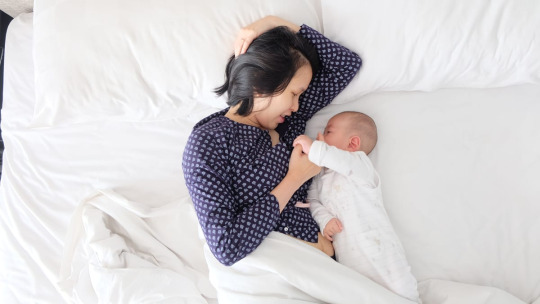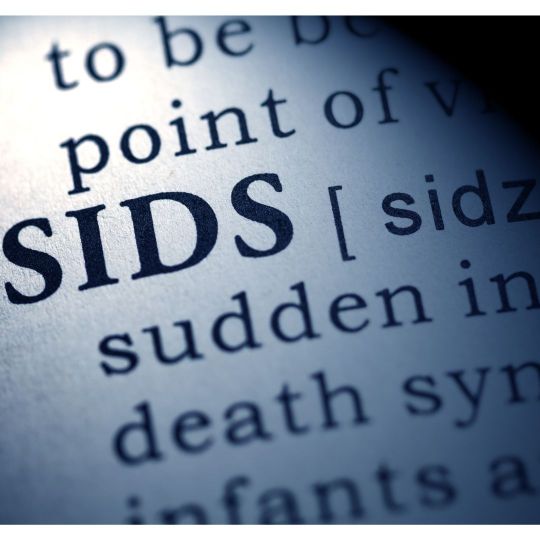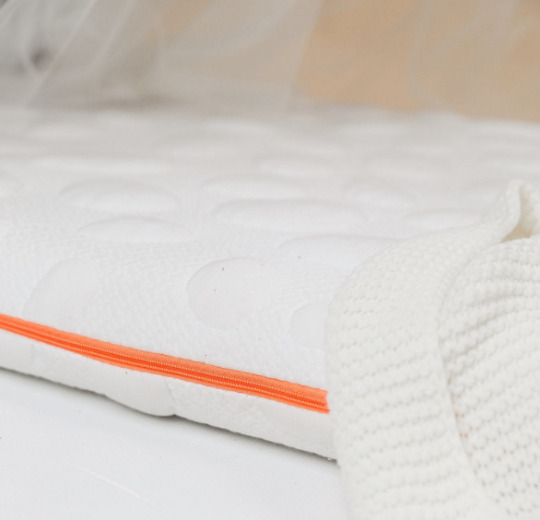#sudden infant death syndrome
Explore tagged Tumblr posts
Text
How Families Slept

You know what? Just when I wrote about the medieval living situations I remembered one comment I got on a fanfic a while ago. It was one of my Castlevania and it featured the golden trio having their infant daughter sleep with them in the same bed, when the child was not able to sleep in her crib.
The comment person got really angry about that. How do I dare writing about parents co-sleeping with their infant? Have I never heard about sudden infant death syndrome?
To which I say: "... You are aware that we have evolved to co-sleep with out infants, right?"
You guys know the saying: "Sleeping like a baby?" Have you guys ever wondered what was up with that, given that babies' are well known for... not sleeping very peaceful and keeping their parents awake?
Yeah, the saying originally went: "Sleeping like a baby at mother's bossom." Because it turns out... babies can sleep very peacefully, if they are sleeping in the arms of their parents. Not always. And toothing will most certainly still rob the parents' sleep.
This is the reason why to this day most infants around the world still sleep in the same bed as their parents. Most infants historically slept in the same bed as their parents, given that cribs were expensive - and that nobody had additional rooms for kids to sleep in either. So, yeah, they just slept in the same bed as the parents.
Does co-sleeping heighten the risk of SIDS? Yeah. But only very, very slightly. Meanwhile co-sleeping has also a lot of positive effects on the health of the infant.
To be honest, that comment got me really annoyed, because it just shows just US-centrism. Because while yeah, nurseries are common enough in Western Europe, too, this obsession with keeping the kids out of their parent's bed and forbidding (and shaming people for) co-sleeping is very much an US thing.
As I said: Yes, it co-sleeping slightly increases the chance of sudden infant death. But... It is still about as likely as getting hit by lightning. At least with an otherwise healthy child.
We are still animals. As such we have not evolved to have kids in a whole ass seperate room from the parents.
Not so fun fact, though: The origin of cribs is, basically, that during medieval times often enough during famines parents would smolder their infants to death and then say: "Oh, it was an accident." Which is why the church passed a decree that kids should sleep in a crib. So that parents could no longer claim "an accident".
13 notes
·
View notes
Text
I'm writing the moment Mickey and Minnie find their first child Anne at 3 months and I've had to take several breaks,
I wish I could embrace all parents who've gone through this, even from an outsider a writers perspective this, this should never happen
I wish I could hug you all and I hope you all find peace, for those that wish for a rainbow I pray you get them.
#sudden infant death syndrome#SIDs Awareness#writing#public domain#mickey mouse#minnie mouse#child loss#a parent should never have to bury their child#Anne Marie Mouse (OC)
5 notes
·
View notes
Text
one of my regulars lost a newborn baby to sids. i met that baby. in a way i never realized until today, sids didn't feel real to me. now i'm left grappling with sudden reminder of mortality and how much it doesn't care who we are, how young or innocent. and that's one baby, whose name i cannot recall.
#there is so much death in the world already?#i don't understand how people can be willing participants in spreading it#especially to children. especially to whole families.#i don't understand. i don't want to. i think it would destroy me.#sudden infant death syndrome
2 notes
·
View notes
Text

Ottawa couple Mario and Jennifer Bazinet lost their first son — Beau Paul — at three and a half months old. Mario went to get his son and found him lifeless in his crib on Dec. 13, 2020.
"Our world flipped upside down," said Mario, 31. Jennifer, 29, now volunteers for Baby's Breathe Canada, a foundation devoted to Sudden Infant Death Syndrome (SIDS), the official cause of her son's death.
"When a baby dies unexpectedly it's just not the right order of how life goes," she said. "Your whole world falls apart."
Thousands of Canadian families face this gut-wrenching grief, and though Canada's infant mortality rates have improved over time — from about 10.9 deaths out of 1,000 births in 1980 to 4.4 deaths per 1,000 births in 2021 — the country has slipped in its ranking of infant mortality among wealthy, developed nations, according to data from the Organisation for Economic Co-operation and Development (OECD).
Canada went from ranking 10th out of 24 OECD countries in the 1980s to 30th out of 38 OECD nations in 2021.
#Twitter#Andrew baback boozary#Canada#Oecd#Safety net#Cbc#Babies#Society#Health#Global ranking#Analysts#Wealthy#Ottawa#Mario bazinet#Jennifer bazinet#Beau paul#December#Baby's Breathe canada#Sudden Infant Death syndrome#Sids#Canadian#Organization for Economic cooperation and development#Nations
3 notes
·
View notes
Text
He and Roger and Ad Worx itself were apt to be numbered among the fatalities no matter what they did; he could read it on Roger's round face, which had not looked so pallidly serious since he and Althea had lost their boy, Timothy, to the crib-death syndrome when the infant was only nine days old.
"Cujo" - Stephen King
#book quote#cujo#stephen king#advertising agency#fatality#inevitable#serious#pallid#death#infant death#crib death#sudden infant death syndrome#sids
0 notes
Text
My coworkers cousin’s son died and they set up a go fund me to raise money for the funeral as well as finding a cure for sudden infant death syndrome (SIDS) I would really appreciate y’all sharsharing or donating https://gofund.me/fd1210c3
#coworkers#service industry#service workers#restaurant worker#waiter#SIDS#sudden infant death syndrome
1 note
·
View note
Text

#askthequestion#australia#darren4dunkley#knowledgeispower#victoria#whatisreallyhappening#informationsharing#aus_isthistrue#byelection#elections#knowledge#ask the question#sids#sudden infant death syndrome#sads#sudden arrhythmic death syndrome
0 notes
Text
And our corrupt CDC is still pushing 7 - SEVEN - covid shots to all newborns knowing that each shot decreases life expectancy by 7%!!
Reference: https://www.tumblr.com/dosesofcommonsense/761447734421094400/japan-scientists-have-proven-that-every-c19
(Search Japan on my blog for more covid studies)

Science knew the value of Ivermectin.
The FDA, CDC, NIH, Birks, and Fauci knew the value of Ivermectin, BUT they intentionally hid that value from the courts and the public so that the Covid mRNA shot was approved. That is _______. There’s not a word to express how wrong and evil that is. People were guilt tripped into committing a Nuremberg Treaty violation and sandbagging their health with an mRNA drug that would worsen their conditions and eventually kill them WHILE potentially spreading to others.
All of those people deserve to be exposed, licenses revoked, government programs cancelled, people removed from office, indicted, prosecuted, and - when proven guilty - be hung for crimes against humanity and treason.
https://www.nature.com/articles/ja201711
#fda#cdc#nih#deborah birks#anthony fauci#globalist playbook#the great awakening#toxins in children#sudden adult death#sudden infant death syndrome#depopulation agenda#a patient cured is a patient lost#big pharma#doctor or medicine salesman#government corruption
674 notes
·
View notes
Text
How do any humans live ever what the fuck
#chaoticbuggybitchboy#taking a course on sudden infant death syndrome for work and I’m just shooketh what even#I cannot compare this to anything I have no idea what is as sensitive as a tiny human#like what even
7 notes
·
View notes
Text
a 91% missed for me. You have got. to be fucking kidding me.
3 notes
·
View notes
Text
crazy how missing a single enzyme can kill you apparently
0 notes
Text
How to reduce the risk of SIDS? Protecting Your Baby and choosing a right cot mattress.
How to reduce the risk of SIDS?
Sudden Infant Death Syndrome (SIDS) is every parent's nightmare, a silent and inexplicable tragedy that claims the lives of seemingly healthy infants. While the exact cause of SIDS remains unknown, there are steps parents can take to reduce the risk and create a safe sleep environment for their little ones. From choosing the right cot mattress to incorporating organic bedding solutions like Milari Organics, here are essential tips to minimize the risk of SIDS.

Back to Sleep: The American Academy of Pediatrics (AAP) recommends placing babies on their backs to sleep, both for naps and at night. This sleep position significantly reduces the risk of SIDS. Always ensure your baby's sleeping area is free of blankets, toys, and other objects that could pose a suffocation hazard.
Firm Mattress: Invest in a firm cot mattress that fits snugly in the crib. A firm mattress helps prevent your baby from sinking into soft bedding, reducing the risk of suffocation. Avoid using second-hand mattresses, especially those with indentations or signs of wear.
Safety Standards: When purchasing a cot mattress, look for products that meet safety standards set by regulatory bodies. These standards ensure that the mattress materials are safe and free from harmful chemicals. Certifications such as CertiPUR-US or Greenguard Gold indicate that the mattress has undergone rigorous testing for safety and environmental impact.
Organic Bedding: Consider using organic bedding options like those offered by Milari Organics. Organic bedding is made from natural materials grown without synthetic pesticides or fertilisers, reducing exposure to potentially harmful chemicals. Milari Organics offers a range of organic bedding products, including cot mattresses, sheets, and blankets, designed with both safety and sustainability in mind.

Room Sharing: Share your room with your baby, but not your bed. Room sharing has been shown to reduce the risk of SIDS by up to 50%. Place your baby's cot or bassinet near your bed for easy access during nighttime feedings and comforting.
Breastfeeding: If possible, breastfeed your baby. Breastfeeding has numerous health benefits for both mother and baby, including a reduced risk of SIDS. Breast milk provides essential nutrients and antibodies that help protect your baby against infections and other health issues.
What is the importance of using a cot mattress for your little baby?
Using a cot mattress for your baby is of paramount importance for several reasons:

Safety: A cot mattress provides a safe and secure sleeping surface for your baby. It reduces the risk of suffocation and ensures that your baby can breathe freely while sleeping. A firm and well-fitting cot mattress helps prevent your baby from sinking into soft bedding, which could pose a suffocation hazard.
Support: Babies spend a significant amount of time sleeping, especially during their first few months of life. A good cot mattress provides adequate support for your baby's developing body, including their spine and neck. It helps promote healthy spinal alignment and prevents discomfort or stiffness.
Comfort: Comfort is essential for a good night's sleep, and a quality cot mattress can contribute to your baby's overall comfort. A firm yet comfortable mattress provides the right balance of support and softness, helping your baby to rest peacefully and wake up refreshed.
Temperature Regulation: Some cot mattresses are designed with breathable materials that help regulate temperature and prevent overheating. Maintaining a comfortable sleeping temperature is crucial for your baby's safety and well-being, as overheating increases the risk of Sudden Infant Death Syndrome (SIDS).
Hygiene: Cot mattresses are easier to keep clean compared to other bedding options such as blankets or quilts. Many cot mattresses come with removable, washable covers that make cleaning and maintenance a breeze. Keeping your baby's sleeping environment clean and hygienic helps prevent the spread of germs and reduces the risk of infections.
Longevity: Investing in a high-quality cot mattress ensures that it will last through your baby's early years. A durable and well-made mattress can be used for multiple children or passed down to family members, making it a cost-effective choice in the long run.
Peace of Mind: Knowing that your baby is sleeping on a safe and comfortable surface gives parents peace of mind. A cot mattress that meets safety standards and is free from harmful chemicals allows parents to rest assured that they are providing the best possible sleeping environment for their little one.
By following these tips and creating a safe sleep environment for your baby, you can help reduce the risk of Sudden Infant Death Syndrome (SIDS) and provide your little one with a healthy start in life. Remember, every precaution counts when it comes to protecting your precious bundle of joy. And using a cot mattress for your baby is essential for safety, support, comfort, temperature regulation, hygiene, longevity, and peace of mind. It is a crucial investment in your baby's health and well-being, ensuring that they get the restful sleep they need for healthy growth and development.
#milari organics#australia#ikea mattress#baby cot mattress#risk of Sudden Infant Death Syndrome#SIDS
0 notes
Note
what is the sids demon..
Lilith.
In Judaism she is a demon which kills babies. Sids, sudden infant death syndrome, was attributed to her before any scientific discovery was made regarding it.
Neo pagans love to act as if she's some girl boss diety and not a baby killing demon from jewish texts
820 notes
·
View notes
Text
Writing Notes: Newborn Senses

Sight
Over the first few months, babies may have uncoordinated eye movements.
They may even appear cross-eyed.
Babies are born with the ability to focus only at close range. This is about 8 to 10 inches, or the distance between a mother's face to the baby in her arms.
Babies are able to follow or track an object in the first few weeks of life.
Focus improves over the first 2 to 3 years of life to a normal 20/20 vision.
Newborns can detect light and dark but can't see all colors. This is why many baby books and infant toys have distinct black and white patterns.
Hearing
During pregnancy, many mothers find that the baby may kick or jump in response to loud noises and may quiet with soft, soothing music.
Hearing is fully developed in newborns.
Babies with normal hearing should startle in response to loud sounds.
These babies will also pay quiet attention to the mother's or father's voice.
And they will briefly stop moving when sound at a conversational level is begun.
Newborns seem to prefer a higher-pitched voice to a low sounding voice.
They can also tune out loud noises after hearing them several times.
Newborns will have their hearing screened while still in the hospital.
Smell
Studies have found that newborns have a strong sense of smell.
Newborns prefer the smell of their own mother, especially her breast milk.
Taste
Babies prefer sweet over sour or bitter tastes.
Babies show a strong preference for human milk and breastfeeding. This is especially true if they are breastfed first and then offered formula or a bottle.
Touch
Babies are comforted by touch.
Placing a hand on your baby's belly or cuddling close can help him or her feel more secure. Wrapping your baby snugly in a blanket (swaddling) is another technique used to help newborn babies feel secure.
You can buy a special swaddling blanket designed to make swaddling easier.
Don’t use swaddling if your baby is older than 2 months or is trying to roll over on his or her own.
Swaddling may raise the risk for SIDS (sudden infant death syndrome) if the swaddled baby rolls onto his or her stomach.
When you swaddle, give your baby enough room to move his or her hips and legs.
The legs should be able to bend up and out at the hips.
Don’t place your baby’s legs so that they are held together and straight down.
This raises the risk that the hip joints won’t grow and develop correctly.
This can cause a problem called hip dysplasia and dislocation.
Also be careful of swaddling your baby if the weather is warm or hot. Using a thick blanket in warm weather can make your baby overheat. Instead, use a lighter blanket or sheet to swaddle the baby.
Some mothers find their babies are comforted when worn in a sling or carrier.
Holding a baby for feedings is also important. Breastfeeding babies automatically spend several hours a day in their mother's arms.
Source ⚜ More: Notes & References ⚜ On Children
#children#writing reference#writeblr#spilled ink#creative writing#writing tips#literature#writing notes#studyblr#writing prompt#writing#writers on tumblr#dark academia#poets on tumblr#langblr#light academia#silvestro lega#writing resources
140 notes
·
View notes
Text
i need a pussy &vajayjay and some fries and adderall and a heartfelt gift from a friend and an end to all war and sudden infant death syndrome (delayed)
142 notes
·
View notes